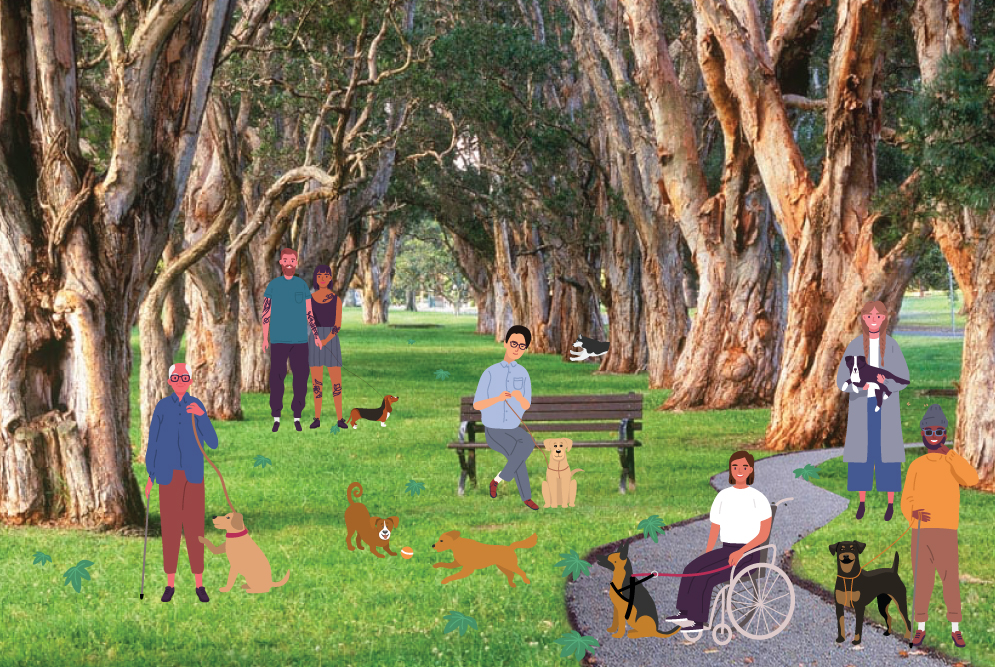
8 Types of Assistance Dogs We Know You’ll Love
For many people, their dog is their best friend and companion.
An assistance dog is that and even more for their owner. They are not only a companion and a loved one, but also a daily source of support to live life as they choose.
There are a wide variety of assistance dogs around the world. Find eight of them below – Some you may have never heard of!
1. Guide Dogs
Guide dogs are one of the most commonly-known assistance dogs. They assist people who are blind and those that have low vision to move safely around public spaces and complete a wide range of tasks in their daily lives.
Common guide dog breeds are Labradors and Golden Retrievers, however Labradoodles are also used, usually when the owner has allergies. Guide dogs wear a special harness with a handle for their owner to hold. Often, the rule is that Guide Dogs should not be petted or played with when they have their harness on. That is business time! Once the harness is off, it’s time to play!
[Image description for below: Three smiling yellow Labradors lay down in front of a hay bale and three bright orange pumpkins. A guide dog harness is set off to the right side, leaning on one of the pumpkins.]
2. Hearing Dogs
Hearing dogs are assistance dogs for people who are deaf or hard-of-hearing. They assist their owners by alerting them to important sounds such as smoke alarms, door bells and oven timers. When the dog hears the sound, they’ll paw their owner and lead them towards the noise. Hearing dogs support awareness and independence for their owners.
[Image description for below: A black Cocker Spaniel puppy looks into the camera. She has soft fur, floppy ears and big round eyes.]
3. Diabetic Alert Dogs
A Diabetic Alert Dog will alert its owner to potentially deadly blood sugar highs and lows. Their superior sense of smell allows a highly-trained Diabetic Alert Dog to know when its owner is experiencing a hyperglycemic episode when blood sugar is too high, or a hypoglycemic episode when blood sugar is too low.
[Image description for below: A large brown dog wearing a harness rests on the floor of a supermarket aisle. In the background, there is another, curly-haired dog accompanying a person as they shop with a shopping trolley.]
4. Mobility Assistance Dogs
Mobility Assistance Dogs can perform a wide range of tasks for their owners. These assistance dogs can help people with many different mobility issues including spinal cord injuries, brain injuries, muscular dystrophy, and arthritis. They can open doors, retrieve items and even help their owner pay at a cash register by putting their paws up on the counter and giving their owner’s wallet to the cashier.
[Image description for below: A person sitting on a mobility aid looking down at a brown dog. The dog looks back up at her. The person wears a mask and has long hair. The dog has its front legs crossed and a bandana around its neck. They look content.]
5. Seizure Response Dogs
Seizure Response Dogs are trained to assist a person during and immediately after they have had an epileptic seizure. These dogs’ tasks can range from finding someone to help their owner, stimulating their owner to help them ‘wake up’ from a seizure, and physically moving their owner if they have a seizure in an unsafe place, such as the middle of the street.
[Image description for below: A person and a Labrador lying together on a blanket. The person is hugging the dog. The dog is wearing a Service Dog harness.]
6. Autism Support Dogs
Autism Support Dogs provide assistance and emotional support to people with autism. These dogs can be a big boost in confidence for children in particular, and help them connect with their classmates by acting as an icebreaker. An Autism Support Dog can also keep a child from running away, and they can often track them if they do run off.
[Image description for below: Photo of a cocker spaniel looking alert and resting her front legs on a fallen tree trunk. She has two collars on and a walking track and tall trees are visible behind her.]
7. Allergy Detection Dogs
Allergy Detection Dogs are trained to pick up on scents that could be harmful to their owner. The dog will then alert their owner about the danger so they can avoid it.
[Image description for below: Photo of a small brown dog in an Assistance Dog harness. She is resting on some tiles.]
[English translation: “Today I went to the hardware store again.”]
Allergy Detection Dogs are trained to pick up on scents that could be harmful to their owner. The dog will then alert their owner about the danger so they can avoid it.
8. Psychiatric Service Dogs
Psychiatric Service Dogs cover a wide category of assistance dogs. These dogs can assist people who are suffering from depression, anxiety and post-traumatic stress disorder (PTSD). These dogs can be trained to sense changes in their owner’s body when they are about to have a panic attack, flashback, or an anxiety attack.
[Image description for below: A brown and white dog with perky ears sniffs the air with her head held high She is wearing a harness. She sits on a damp boardwalk and there are trees and leaves on the ground behind her.]
Find examples of all these beautiful assistance dogs in the video below!
To find out more about Ai-Media and our accessibility services, visit our website or get in touch with our friendly team.










